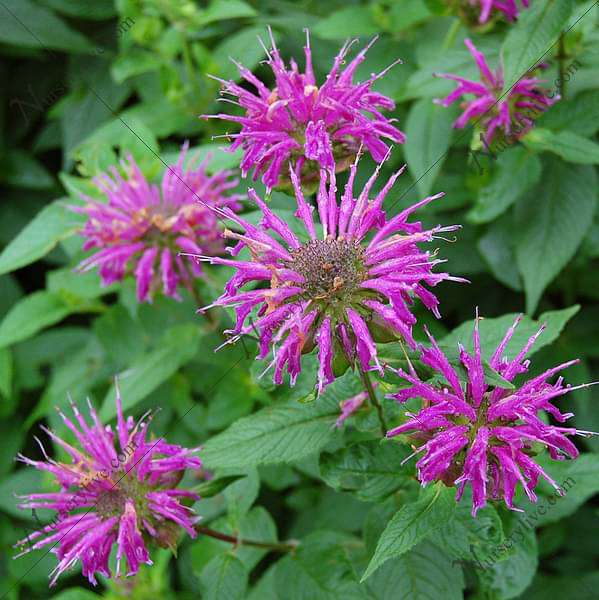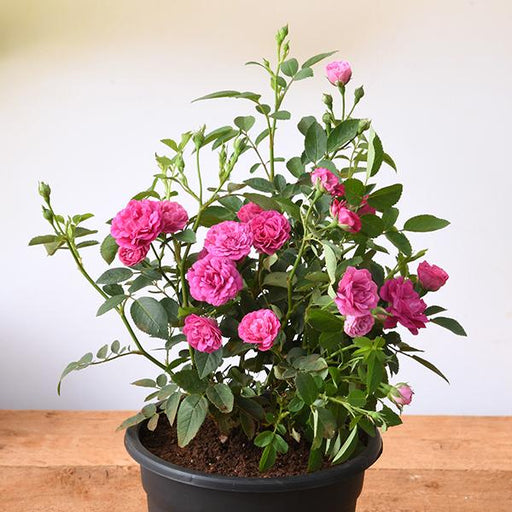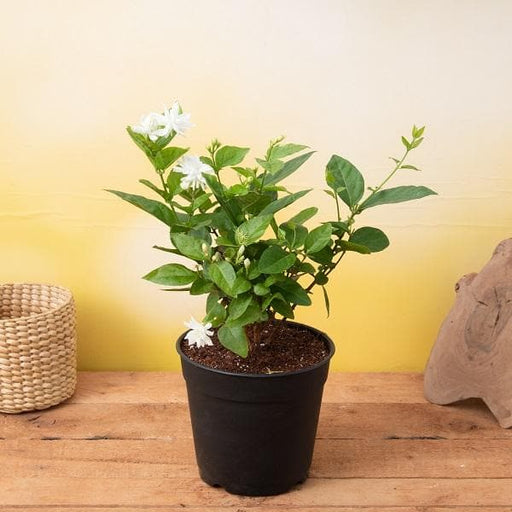
Bergamot, Bee Balm - Plant
(MRP Inclusive of all taxes)
- Shipping ₹79 for entire order
- Dispatch in 7 days
- Country of origin: India

(MRP Inclusive of all taxes)
 Save 29%
Save 29%
Air Purifier Money Plant with Pot The Air Purifier Money Plant, also known as Pothos or Epipremnum aureum, is a stunning indoor plant that...
View full details
 Save up to 15%
Save up to 15%
Peace Lily, Spathiphyllum - Plant The Peace Lily, scientifically known as Spathiphyllum, is a stunning houseplant celebrated for its elegant white...
View full details
 Save 25%
Save 25%
Jasminum sambac, Mogra, Arabian Jasmine - Plant Jasminum sambac, commonly known as Mogra or Arabian Jasmine, is a fragrant flowering plant...
View full details
 Save 18%
Save 18%
Combo Constituents Includes the Parijat Tree (Night-Flowering Jasmine), a culturally significant plant with fragrant flowers. Description The Pari...
View full details
 Save 25%
Save 25%
Miniature Rose, Button Rose (Any Color) - Plant The Miniature Rose, also known as the Button Rose, is a charming and compact flowering plant that ...
View full details Save 25%
Save 25%
Damascus Rose, Scented Rose (Any Color) - Plant The Damascus Rose, also known as Rosa damascena, is a timeless symbol of beauty and romanc...
View full details
 Save 17%
Save 17%
Beautiful Fragrant Mogra, Arabian Jasmine Plant with Pot The Beautiful Fragrant Mogra, also known as Arabian Jasmine (Jasminum sambac), is...
View full details Save 15%
Save 15%
Pack of Vermicompost and Neem Cake for House Plants Transform your indoor garden with our premium Pack of Vermicompost and Neem Cake, spec...
View full details
Pack of Plant Growth and Flower Boosters Unlock the full potential of your garden with our Pack of Plant Growth and Flower Boosters! This ...
View full details Save 38%
Save 38%
Combo of Jeevamrut and Neem Raksha for Easy Growth and Protection of Houseplants Transform your indoor garden with our exclusive combo of ...
View full details Save 22%
Save 22%
Plant Nutrients Kit (Pack of 16) for a Healthy Garden Transform your garden into a lush paradise with our Plant Nutrients Kit, featuring 1...
View full details Save 16%
Save 16%
Combo of Top Plant Fertilizers Elevate your gardening game with our exclusive Combo of Top Plant Fertilizers, featuring two bags of premiu...
View full details Save 24%
Save 24%
Pack of 4 Additives to Make Soil Healthy and Nutrient Rich Transform your garden into a thriving ecosystem with our Pack of 4 Additives de...
View full details Save 30%
Save 30%
Transform your gardening experience with our premium Combo of Perlite and Vermiculite. This unique blend is designed to enhance soil aeration and ...
View full details Save 27%
Save 27%
Combo of 2 Vermicompost and Cocopeat - Enrich Your Soil Naturally! Transform your garden into a thriving ecosystem with our Combo of 2 Ver...
View full details
 Save 35%
Save 35%
Best 6 Plants for Perfect Indoor Garden Transform your living space into a lush oasis with our curated collection of the Best 6 Plants for a...
View full details
 Save up to 50%
Save up to 50%
Mini Succulent Garden Pack Transform your space with our Mini Succulent Garden Pack, featuring a delightful collection of 4 any variety beautiful s...
View full details
 Save 30%
Save 30%
5 Best Fragrant Plants Transform your garden or indoor space into a fragrant paradise with our curated selection of the 5 Best Fragrant Plants. Th...
View full details
 Save 24%
Save 24%
Set of 2 Bonsai Looking Grafted Adeniums Transform your indoor or outdoor space with our exquisite Set of 2 Bonsai Looking Grafted Adenium...
View full details Save 45%
Save 45%
Top 4 Die Hard Succulents Pack Transform your indoor or outdoor space with our Top 4 Die Hard Succulents Pack, featuring a curated selecti...
View full details
 Save 30%
Save 30%
5 Best Indoor Plants Pack Transform your living space into a lush oasis with our '5 Best Indoor Plants Pack.' This carefully curated collection fe...
View full details
 Save 25%
Save 25%
Set of 4 Evergreen Air Purifier Plant Pack Transform your indoor space into a lush, green oasis with our Set of 4 Evergreen Air Purifier Pla...
View full details| SrNo | Item Name |
|---|---|
| 1 | Bergamot, Bee Balm - Plant |
Bergamot, also known as Monarda didyma, is a stunning perennial herb that captivates with its vibrant, tubular flowers and aromatic foliage. This native North American plant is not only a feast for the eyes but also a magnet for pollinators, making it an essential addition to any garden. With its minty, citrusy scent, bee balm is a favorite among herbalists and chefs alike, offering a unique flavor profile for teas and culinary dishes.
What makes Bergamot special is its rich history and ecological benefits. Traditionally used by Native Americans for medicinal purposes, bee balm has been celebrated for its antiseptic and anti-inflammatory properties. Its ability to attract bees, butterflies, and hummingbirds enhances biodiversity, making it a vital component of sustainable gardening practices.
One of the standout features of Bergamot is its resilience. This hardy plant thrives in various soil types and conditions, making it an excellent choice for both novice and experienced gardeners. Its striking blooms not only add color to your landscape but also provide essential nectar for pollinators, supporting local ecosystems.
Bergamot, Bee Balm plays a crucial role in supporting pollinator populations, which are essential for the health of our ecosystems. By planting bee balm, you contribute to the preservation of biodiversity and help combat the decline of pollinator species.
Ah, the aromatic elixir of bergamot essential oil! This zesty delight is like a citrus party in a bottle, perfect for lifting your spirits and adding a splash of sunshine to your day. Known for its mood-enhancing properties, it’s the go-to oil for those who want to feel like they’re lounging in a sun-drenched Italian garden. Just a few drops in your diffuser, and you’ll be ready to conquer the world—or at least your to-do list. Plus, it’s a natural stress-buster, making it the perfect companion for those Netflix marathons.
Bee balm, or Monarda didyma, is not just a pretty face in the garden; it’s a multitasking marvel! This vibrant herb attracts pollinators like bees and butterflies, making your garden the hottest spot in town. But wait, there’s more! Bee balm is also known for its medicinal properties, often used to soothe colds and digestive issues. It’s like having a tiny pharmacy right in your backyard. So, plant some bee balm, and you’ll be the neighborhood herbalist, all while enjoying the delightful sight of buzzing friends.
Ready to get your hands dirty? Planting bergamot is like hosting a garden party where the guests are fragrant and fabulous! This herb thrives in well-drained soil and loves a sunny spot, making it the diva of the garden. With its striking purple flowers and citrusy aroma, bergamot will have your neighbors green with envy. Plus, it’s a perennial, so once you plant it, you’ll have a loyal companion for years to come. Just remember to give it a little love and water, and it’ll reward you with a bountiful harvest of leaves for teas and culinary delights.
Sip, sip, hooray! Bee balm tea is the herbal hug you didn’t know you needed. With its minty flavor and soothing properties, this tea is perfect for cozy evenings or when you need a little pick-me-up. Just steep those vibrant leaves in hot water, and voilà! You’ve got yourself a cup of nature’s goodness. It’s not just delicious; it’s also packed with antioxidants, making it a guilt-free indulgence. So, brew a cup, kick back, and let the calming effects wash over you like a gentle breeze on a summer day.
Who knew bergamot could be the culinary superstar of your kitchen? This zesty herb adds a unique twist to dishes, elevating your cooking game from mundane to magnificent. Use its leaves to infuse oils, or sprinkle them over salads for a burst of flavor that’ll have your taste buds dancing. It’s like a secret ingredient that transforms ordinary meals into gourmet experiences. Plus, it pairs beautifully with fish and poultry, making you the master chef of your dinner parties. Get ready to impress your guests with your newfound bergamot prowess!
If you’re looking to throw a garden bash for pollinators, bee balm is the VIP guest you need! This vibrant plant is a magnet for bees, butterflies, and hummingbirds, turning your garden into a buzzing paradise. By planting bee balm, you’re not just beautifying your space; you’re also supporting the ecosystem. These little pollinators work hard to keep our plants thriving, so why not give them a place to party? With its bright colors and delightful nectar, bee balm is the ultimate host, ensuring your garden is the talk of the town.
Welcome to the aromatic wonderland of bergamot! This essential oil is a staple in aromatherapy, known for its uplifting and calming effects. Just a whiff of bergamot can transport you to a serene spa, melting away stress and anxiety. It’s like a mini-vacation in a bottle! Use it in your diffuser, or mix it with a carrier oil for a soothing massage. Whether you’re winding down after a long day or gearing up for a busy one, bergamot is your aromatic ally, ready to help you find your zen.
Who needs fancy creams when you have bee balm? This herbal wonder is not just for tea; it’s also a skin savior! With its natural antiseptic and anti-inflammatory properties, bee balm can help soothe minor cuts, scrapes, and even pesky insect bites. It’s like having a first-aid kit right in your garden! Simply crush the leaves and apply them to your skin for a refreshing remedy. Say goodbye to chemical-laden products and hello to nature’s skincare solution. Your skin will thank you for the herbal love!
Let’s talk about mental health, shall we? Bergamot is not just a pretty plant; it’s a powerful ally in the battle against stress and anxiety. Its uplifting aroma has been shown to reduce cortisol levels, helping you feel more relaxed and centered. Whether you’re diffusing it during a meditation session or adding it to your bath, bergamot is like a gentle nudge reminding you to take a deep breath and chill out. So, embrace the bergamot and let its calming vibes wash over you like a warm hug.
Step aside, modern medicine; bee balm is here to save the day! This versatile herb has been used for centuries in herbal remedies, known for its ability to alleviate colds, digestive issues, and even headaches. It’s like having a natural pharmacy at your fingertips! Brew it into a tea or use it in tinctures, and you’ll be well on your way to holistic healing. With bee balm in your arsenal, you’ll be the go-to guru for all things herbal, impressing friends and family with your knowledge of nature’s remedies.
Gardening with bergamot is like having a green thumb with a flair for the dramatic! This herb is not only easy to grow but also adds a pop of color and fragrance to your garden. With its vibrant blooms and delightful scent, bergamot will have your garden looking like a botanical masterpiece. Plus, it’s a perennial, so you can enjoy its beauty year after year. So grab your gardening gloves, channel your inner horticulturist, and let bergamot be the star of your outdoor oasis!
Bergamot, Bee Balm is a delightful herb known for its aromatic leaves and vibrant flowers. It’s a favorite among pollinators and humans alike, often used in teas and as a natural remedy. Think of it as the life of the garden party, attracting bees and butterflies while you sip your herbal concoction!
Growing Bergamot, Bee Balm is as easy as pie—if pie were a fragrant herb! Plant it in well-drained soil with plenty of sunlight. Water it regularly, but don’t drown it; this plant prefers a little drought. Soon, you’ll have a buzzing garden that’s the envy of all your neighbors!
Bergamot, Bee Balm is like a Swiss Army knife for your health! It boasts antimicrobial properties, aids digestion, and can even help with stress relief. Plus, its lovely aroma can elevate your mood. Who knew a plant could be your therapist, chef, and aromatherapist all in one
Absolutely! Bergamot, Bee Balm adds a zesty twist to your culinary creations. Use its leaves in salads, teas, or as a garnish for desserts. Just remember, a little goes a long way—too much, and you might end up with a dish that tastes like a garden!
While Bergamot, Bee Balm is generally safe for pets, it’s always wise to keep an eye on your furry friends. Some pets might find the taste a bit too zesty for their liking. If they start acting like they’ve just tasted a lemon, it might be time to redirect their attention!
Bergamot, Bee Balm typically blooms in mid to late summer, showcasing its stunning flowers. These vibrant blooms are like nature’s confetti, attracting bees and butterflies to your garden. So, get your camera ready; you’ll want to capture the floral fiesta!
Winter care for Bergamot, Bee Balm is a breeze! Simply cut back the dead stems and mulch around the base to protect the roots. This plant is tough, so it can handle a little chill. Just think of it as a winter hibernation, waiting to spring back to life!
Yes, you can propagate Bergamot, Bee Balm like a pro! Simply take cuttings in spring or divide established plants. Stick them in soil, give them a little love, and watch them flourish. Soon, you’ll have a mini herb empire right in your backyard!
Bergamot, Bee Balm is generally pest-resistant, but watch out for aphids and spider mites. If they crash your garden party, a gentle spray of water or insecticidal soap can send them packing. Remember, a healthy plant is a happy plant, so keep it thriving!
Absolutely! Bergamot, Bee Balm makes a delightful herbal tea that’s both refreshing and soothing. Just steep the leaves in hot water, and voilà! You’ve got yourself a cup of nature’s goodness. Add a splash of honey, and you’ll be sipping like royalty!
Bergamot, Bee Balm thrives in well-drained, loamy soil with a touch of acidity. Think of it as a diva that prefers a balanced diet—too much clay or sand, and it might throw a tantrum. Just give it the right conditions, and it’ll reward you with a stunning display!